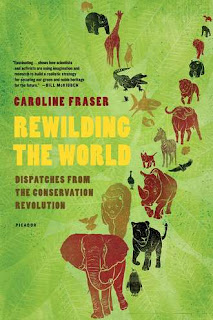Angela Dominguez is the author of Stella Díaz Has Something to Say, a new novel for kids. She has written and illustrated a number of picture books for kids, including Maria Had a Little Llama and Sing, Don't Cry. She was born in Mexico City, grew up in Texas, and now lives on the East Coast.
Q: How did you come up with the idea for Stella Díaz Has Something to Say?
A: It originally began as an idea for a picture book. It was a simple story of a little girl at an aquarium learning to overcome her shyness, but it didn’t quite work. The critiques I received all asked the question: why was Stella so shy? And why can’t she talk to someone from school? Without a publisher interested, I gave up on Stella.
Still, the story stuck with me. I even had one of the
drawings of Stella hanging over my art desk for months. I empathized with her.
I too was painfully shy growing up.
Luckily, I began illustrating chapter books. I fell in love
with the stories and the voice of those characters. Soon my nonfiction shelves
were being replaced with middle grade novels.
Those books gave me the inspiration to expand Stella into a
narrative filled with my own experiences. I realized much of my shyness
originated from struggling with speaking English and feeling caught between two
worlds and two cultures.
These realizations helped me build a complete and much
longer story for Stella. I filled in the rest with food that I love from my
culture, memories from my childhood, and a recent obsession with aquatic
creatures.
I eventually showed my 7,000-word manuscript to my editor,
Connie Hsu, over coffee. Thankfully she saw the potential. From there, I worked
on it with Connie for several months without a contract.
Because this was my first middle grade, the manuscript had
to be really tight. She also had me expand the story--almost three times the
length! Luckily once the publisher saw it, they acquired it. The whole process
was truly a labor of love.
Q: How would you compare your writing process with a middle
grade novel to your experiences writing and illustrating picture books?
A: The words were the main focus rather than the art. In a
picture book, the words and art are a perfect duo that supposed to play off or
enhance each other. The art in Stella is more of an accent. It was a way to
break up the book so that's it's a little more fun and easier to read for young
readers.
Thankfully, when it came to drawing the pictures I had the
characters already designed from the original picture book dummy. I just had to
age them up a bit in the drawing. The cover took several rounds, but I’m
overjoyed with the way it turned out.
Q: The book includes the theme of immigration. What do you
hope readers take away from Stella's experiences, especially given that
immigration is such a huge issue right now?
A: I have three big hopes. First, that kids after
reading Stella will learn to empathize with someone who comes from a different
place. That they realize that immigrants are not outsiders and instead see them
as a potential friend.
Second, I hope that immigrants who read the book feel a
little less alone. I remember the first time I read The Buddha of Suburbia in
college. It deals with immigration and outsider themes. It really opened my
eyes and made me realize that feelings I had were not unusual. I kept thinking
I would have loved to have read something like that when I was younger.
Lastly, I hope the book piques readers' curiosity about
Mexican culture and they search out some of things I mention in the book.
Q: Who are some of your favorite authors?
A: I have tendency to read quite a bit of middle grade
novels or nonfiction. I would say a few of my favorite middle grade authors are
Kate DiCamillo, Erin Entrada Kelly, Susan Tan, E.B White, and Roald Dahl.
Q: What are you working on now?
A: Currently, I’m focusing on illustrating. I’m working on
three picture books all in various stages. I hope to start writing again by
summer on more middle grade ideas.
Q: Anything else we should know?
A: I have a new picture book coming out in March called How Are You?¿Cómo Estás?. Other than that, I had a blast writing this book and
I hope that I’ll be able to do more.
--Interview with Deborah Kalb































